Note: these images have been published
by
Cao and Wu 2007, AJ, in press.
To see the press release on this galaxy,
click
here.
Last updated 12/6/07 by
B. J. Smith.
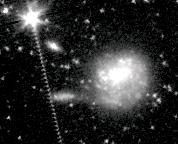
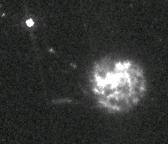
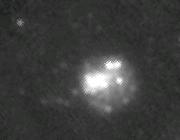
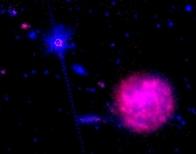
Arp 24. North is up and east to the left.
Left: IRAC band 1 (3.6 microns).
Next: IRAC band 4 (8.0 microns).
Next: MIPS 24 microns.
Last: False color. Blue=3.6 microns; Red=8.0 microns, after
stellar component subtracted.
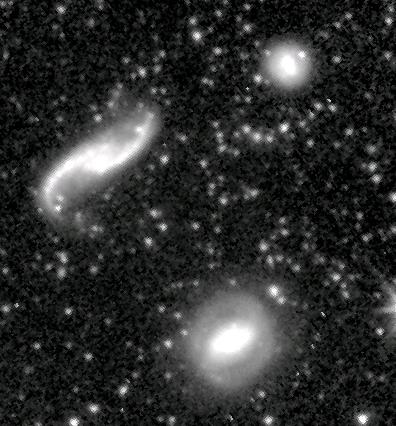

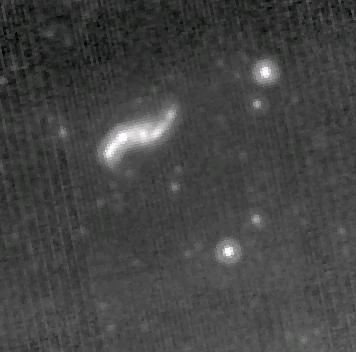
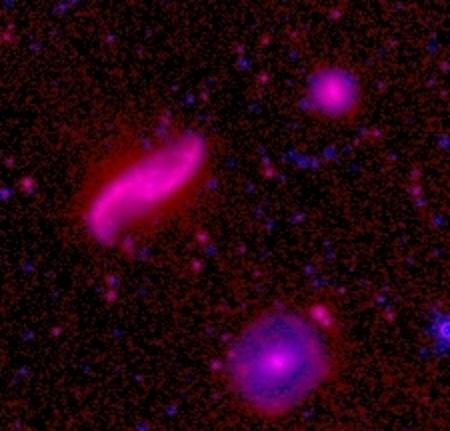
Arp 34. North is up and east to the left.
Left: IRAC band 1 (3.6 microns).
Next: IRAC band 4 (8.0 microns).
Next: MIPS 24 microns.
Last: False color. Blue=3.6 microns; Red=8.0 microns, after
stellar component subtracted.
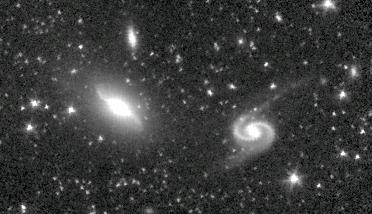
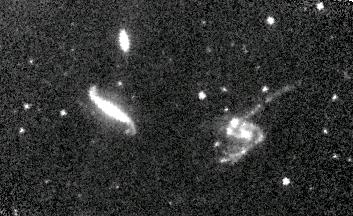
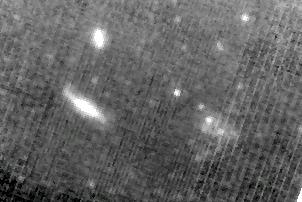

Arp 65 (NGC 90/93). North is up and east to the left.
NGC 90 is the galaxy to the west (right) with the long
tails.
Left: IRAC band 1 (3.6 microns).
Next: IRAC band 4 (8.0 microns).
Next: MIPS 24 microns.
Last: False color. Blue=3.6 microns; Red=8.0 microns, after
stellar component subtracted.
Gorgeous at both IRAC wavelengths.
The tails are clumpier at 8.0 microns.
The bulge of the northern galaxy
is more visible at 3.6 microns, while the
disk is more evident at 8.0 microns.
Just the disks are visible at 24 microns,
with a hint of the southeastern tail of NGC 90.
Note the very red (dusty; starbursty) clumps in the western galaxy.


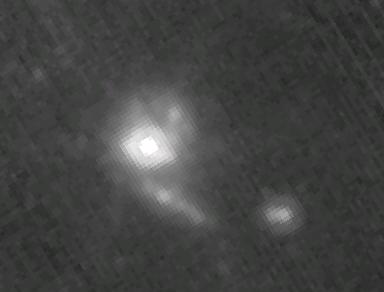
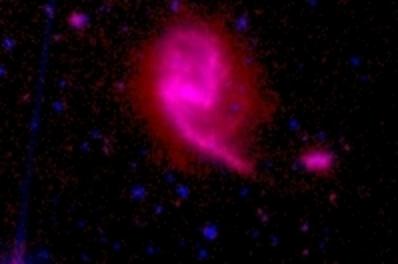
Arp 72. Left: IRAC band 1 (3.6 microns).
Next: IRAC band 4 (8.0 microns).
Next: MIPS 24 microns.
Last: False color. Blue=3.6 microns; Red=8.0 microns, after
stellar component subtracted.
North is up and east to the left.
Note the very long tail to the east in the 3.6 micron image.
Unfortunately, a bright star to the lower left has caused an artifact
near this tidal feature.
Note also the bright clump in the bridge at 24 microns.
Arp 82:
Click
here
to go to a web page with the Spitzer, GALEX, and SARA images
of Arp 82.
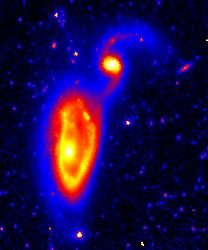



Left: IRAC 3.6 microns. Next: IRAC 8.0 microns.
Next: Arp 84 with the MIPS 24 micron filter.
Last: False color. Blue=3.6 microns; Red=8.0 microns, after
stellar component subtracted.
North is up and east to the left.

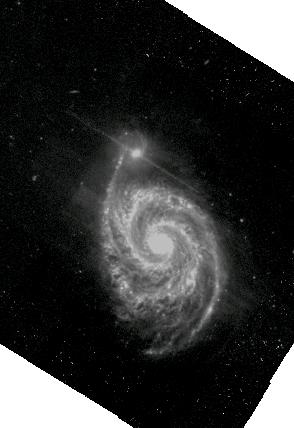


Arp 85 = NGC 5194/5 = M51. North is up and east to the left.
This is part of the SINGS sample.
Left: IRAC 3.6 microns. Next: IRAC 8.0 microns.
Next: MIPS 24 microns.
Last: False color. Blue=3.6 microns; Red=8.0 microns, after
stellar component subtracted.

The Arp 85 (M51) 8 micron image, expanded.
Note the striking `wispy' 'holey'
structure
in the dust at 8 microns.
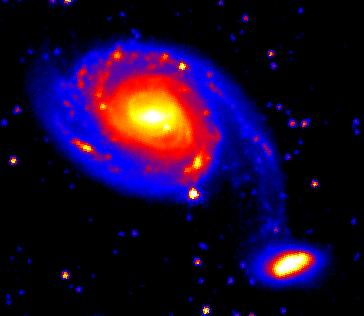
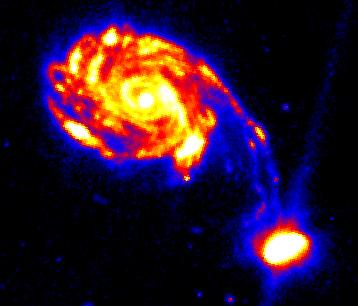
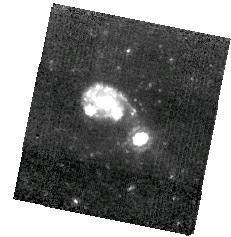
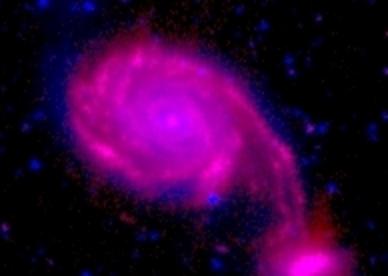
Left: IRAC 3.6 microns. Next: IRAC 8.0 microns.
Next: Arp 86 with the MIPS 24 micron filter. North is up and east to the left.
Last: False color. Blue=3.6 microns; Red=8.0 microns, after
stellar component subtracted.
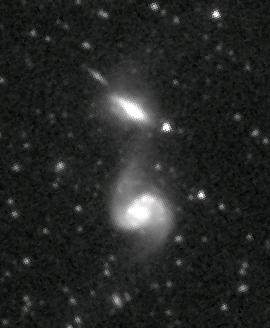

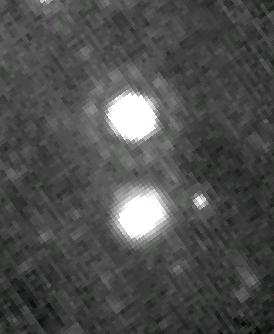

Arp 87.
North is up and east to the left.
Left: band 1 (3.6 microns).
Next: band 4 (8.0 microns).
Next: MIPS 24 microns.
Last: False color. Blue=3.6 microns; Red=8.0 microns, after
stellar component subtracted.

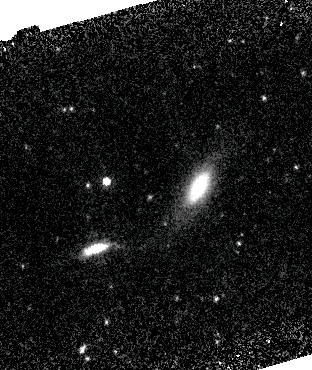
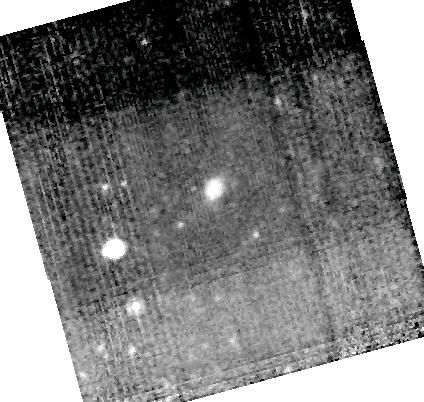
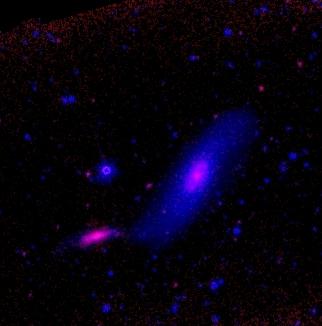
Arp 89.
Left: IRAC band 1 (3.6 microns).
Next: IRAC band 4 (8.0 microns).
Next: MIPS 24 microns.
Last: False color. Blue=3.6 microns; Red=8.0 microns, after
stellar component subtracted.
North is up and east to the left.
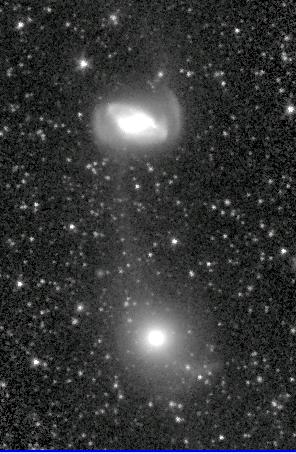
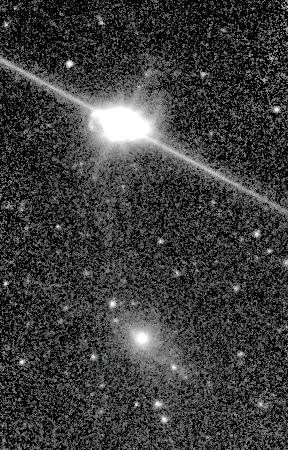
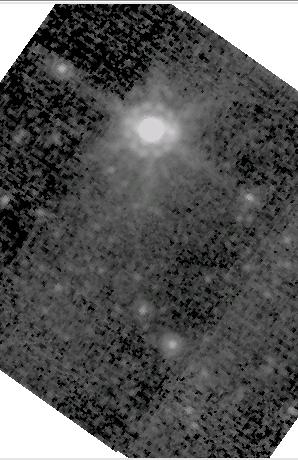
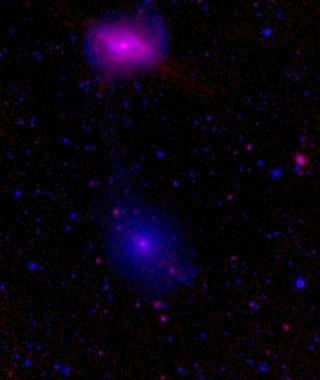
Arp 104 (NGC 5216/8).
North is up and east to the left.
The more northern galaxy is NGC 5218,
which is classified as a LINER.
Left: IRAC band 1 (3.6 microns).
next: IRAC band 4 (8.0 microns).
next: MIPS 24 microns.
Last: False color. Blue=3.6 microns; Red=8.0 microns, after
stellar component subtracted.
Notice that the bridge almost disappears at 8.0 microns.
Note the artifact around the bright nucleus of NGC 5218 at 24 microns.
Arp 105 (NGC 3561). In the Houck `Tidal Dwarf Galaxies' GTO program.
Observed with IRAC May 6, 2005. Available June 1, 2006.
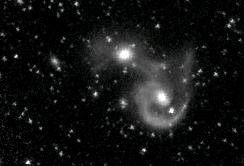

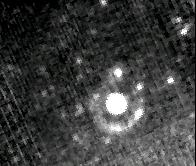
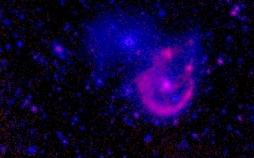
Arp 107. North is up and east to the left. Left: band 1 (3.6 microns).
Next: band 4 (8.0 microns).
Next: MIPS 24 microns.
Last: False color. Blue=3.6 microns; Red=8.0 microns, after
stellar component subtracted.
The morphology appears very different
at these wavelengths. As with Arp 104,
the bridge is clear at 3.6 microns but almost disappears at 8.0 microns.
The knots in the ring become more prominent
at 8.0 microns.
The elliptical companion is very faint at 24 microns but the
ring is clearly visible.
Also see the color-color diagrams of the clumps on the
Arp 107 Spitzer web page.
Arp 120 (NGC 4435/8). In a Houck GTO program. IRAC observations
were made June 13, 2005, and will be available June 23, 2006.
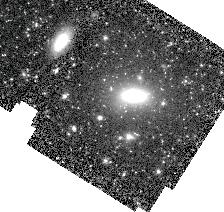

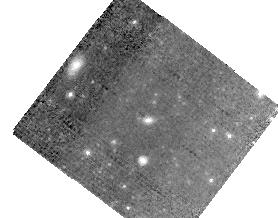
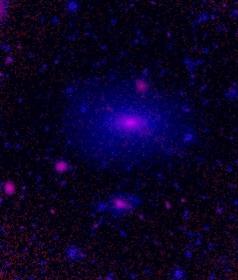
Arp 136.
North is up and east to the west.
Left: IRAC band 1 (3.6 microns).
Next: IRAC band 4 (8.0 microns).
Next: MIPS 24 microns.
Last: False color. Blue=3.6 microns; Red=8.0 microns, after
stellar component subtracted.
Unfortunately the second large galaxy
is not in the field at 8.0 microns.
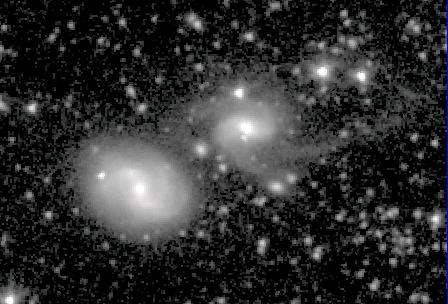
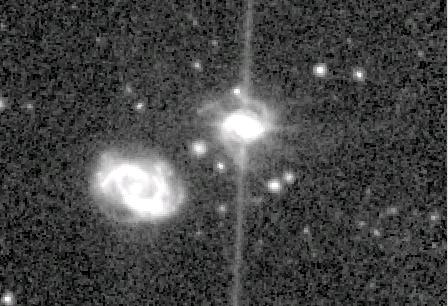

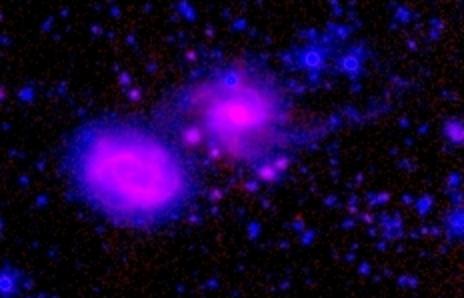
Arp 181 (NGC 3212/5). North is up and east to the west.
NGC 3212 is the more northern galaxy.
Left: IRAC band 1 (3.6 microns).
Next: IRAC band 4 (8.0 microns).
Next: MIPS 24 microns.
Last: False color. Blue=3.6 microns; Red=8.0 microns, after
stellar component subtracted.
Note that the northern tail of NGC 3212 is most visible
at 3.6 microns. The spiral pattern in NGC 3215 is visible
at all three wavelengths. Note the artifacts at 24 microns
around the bright nucleus of NGC 3212.

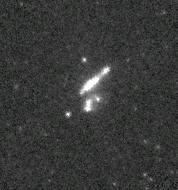
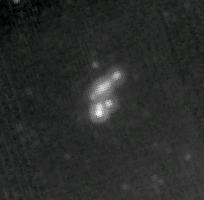
Arp 202. North is up and east to the left.
Left: IRAC band 1 (3.6 microns).
Next: IRAC band 4 (8.0 microns).
Next: The MIPS 24 micron image.

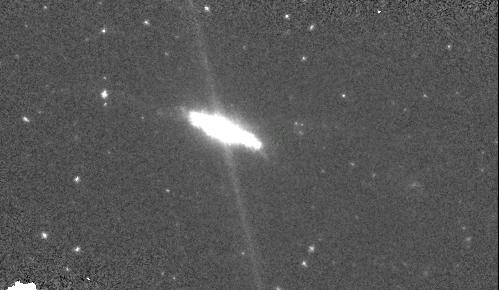
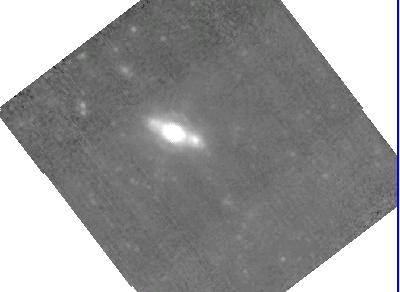
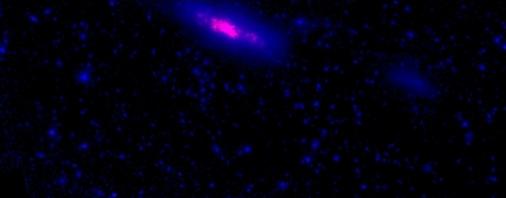
Arp 205.
Left: IRAC band 1 (3.6 microns).
Next: IRAC band 4 (8.0 microns).
Next: MIPS 24 microns.
Last: False color. Blue=3.6 microns; Red=8.0 microns, after
stellar component subtracted.
North is up and east to the left.
The faint companion to
the north is not so evident
at 8.0 microns as at 3.6 microns.
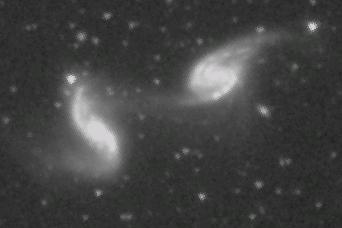

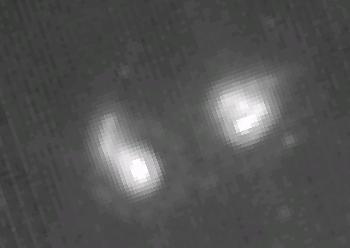
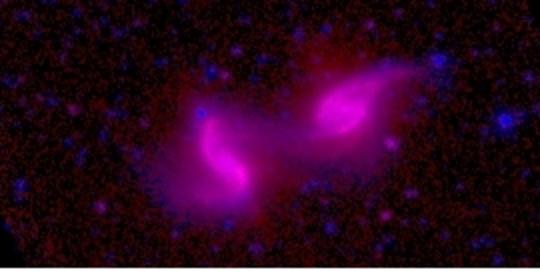
Arp 240 (NGC 5257/8).
North is up and east to the left.
NGC 5257 is to the west (right).
Left: IRAC band 1 (3.6 microns).
Next: IRAC band 4 (8.0 microns).
next: MIPS 24 microns.
Last: False color. Blue=3.6 microns; Red=8.0 microns, after
stellar component subtracted.
From the Mazarella project.
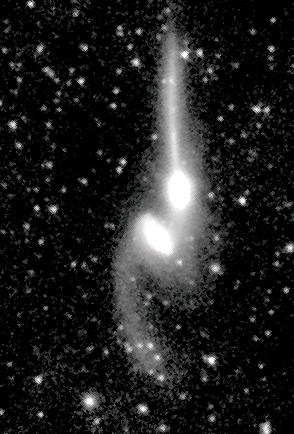
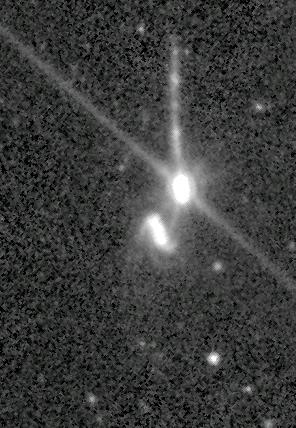
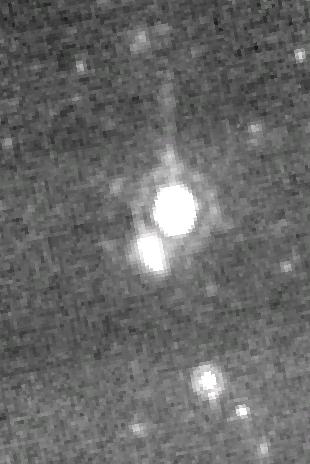
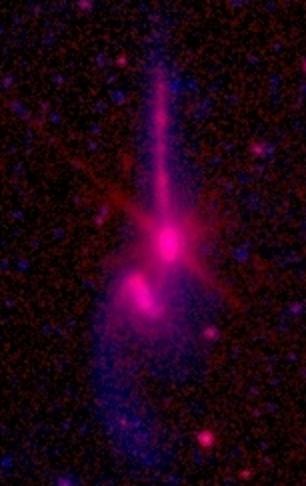
Arp 242 = NGC 4676 = the Mice.
North is up and east to the left.
Left: IRAC band 1 (3.6 microns).
Next: IRAC band 4 (8.0 microns).
Next: MIPS 24 microns.
Last: False color. Blue=3.6 microns; Red=8.0 microns, after
stellar component subtracted.
In the Fazio
`Interacting and Ultraluminous Galaxies' GTO project.
Note the bright clumps in the
northern tail at 8 microns.
At 24 microns, notice also the `ring-like' artifact around the bright nucleus.
This is from the point spread function.
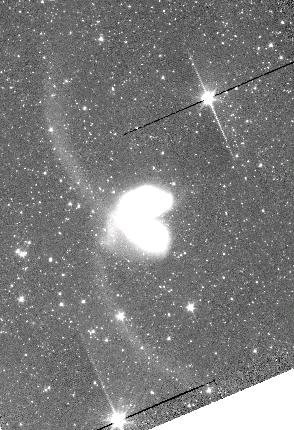
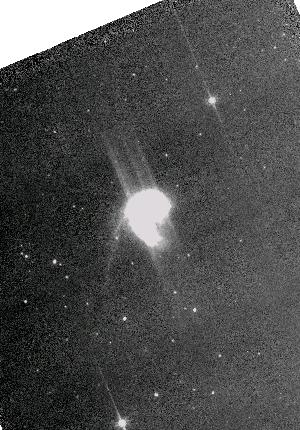
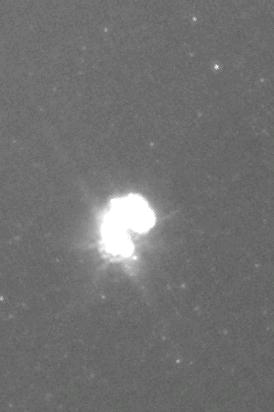

Arp 244 = NGC 4038/9 = the Antennae. North is up and east to the left.
In the Fazio GTO project.
Left: IRAC band 1 (3.6 microns).
Next: IRAC band 4 (8.0 microns).
Next: MIPS 24 microns.
Last: False color. Blue=3.6 microns; Red=8.0 microns, after
stellar component subtracted.
Note that the tails are not well-detected at 8 microns.
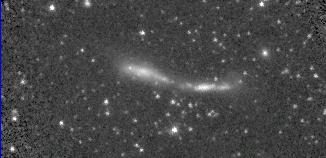
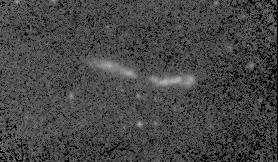
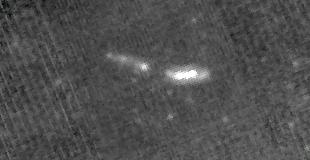
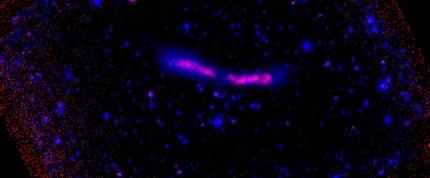
Arp 253. North is up and east to the left. Left: IRAC band 1 (3.6 microns).
Next: IRAC band 4 (8.0 microns). Next: MIPS 24 microns.
Last: False color. Blue=3.6 microns; Red=8.0 microns, after
stellar component subtracted.
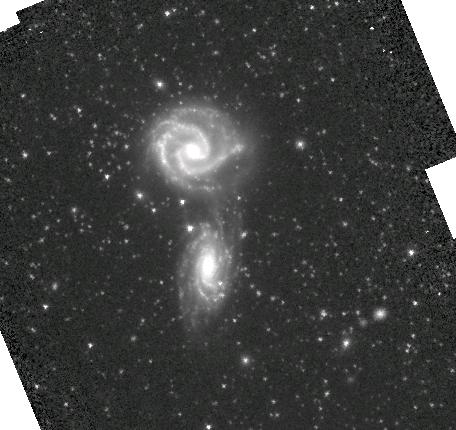
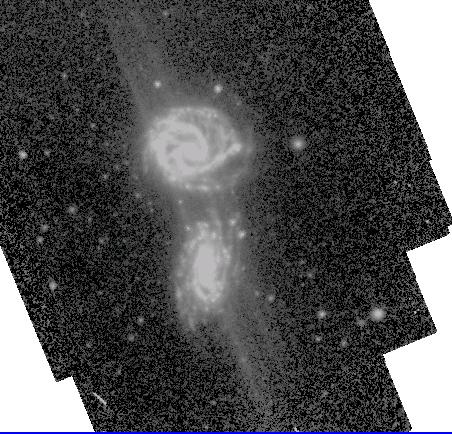

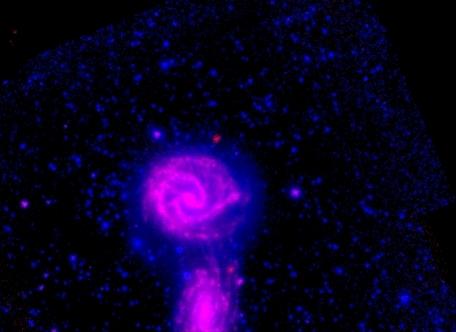
Arp 271. North is up and east to the left. Left: IRAC band 1 (3.6 microns).
Next: IRAC band 4 (8.0 microns). Next: MIPS 24 microns.
Last: False color. Blue=3.6 microns; Red=8.0 microns, after
stellar component subtracted.
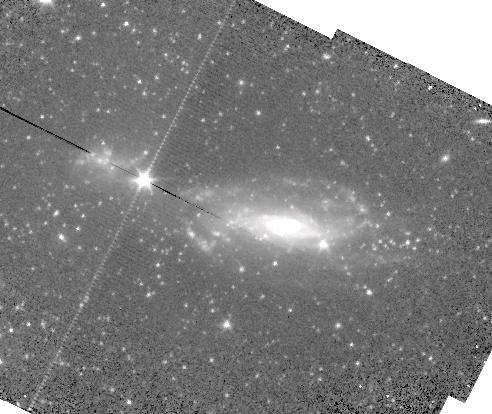
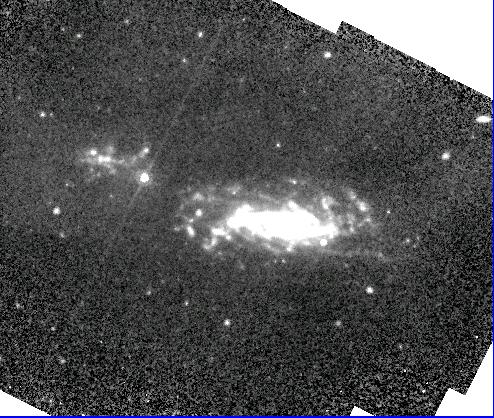

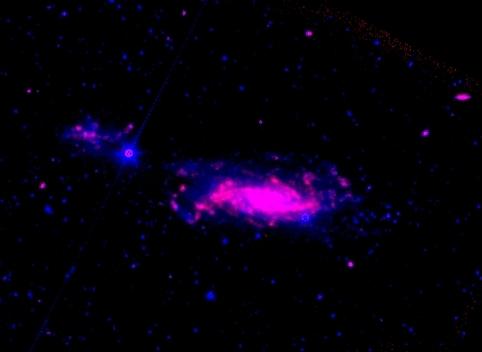
Arp 279. North is up and east to the left. Left: IRAC band 1 (3.6 microns).
Next: IRAC band 4 (8.0 microns).
Next: MIPS 24 microns.
Last: False color. Blue=3.6 microns; Red=8.0 microns, after
stellar component subtracted.
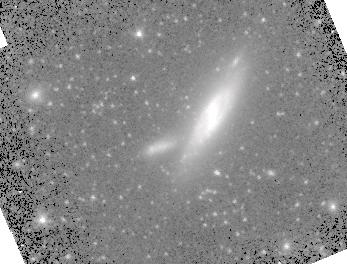

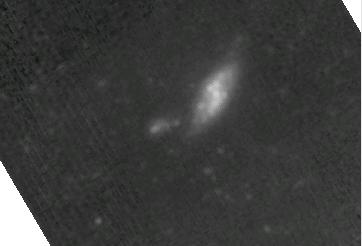

Arp 280.
North is up and east is to the left.
Left: IRAC band 1 (3.6 microns).
Next: IRAC band 4 (8.0 microns).
Next: MIPS 24 microns.
Last: False color. Blue=3.6 microns; Red=8.0 microns, after
stellar component subtracted.
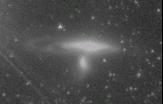
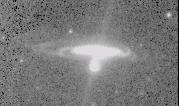
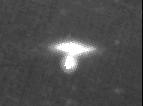
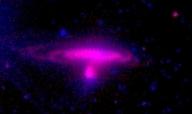
Arp 282: the `UFO' galaxy.
North is up and east is to the left.
Left: IRAC band 1 (3.6 microns).
Next: IRAC band 4 (8.0 microns).
Next: MIPS 24 microns.
Last: False color. Blue=3.6 microns; Red=8.0 microns, after
stellar component subtracted.

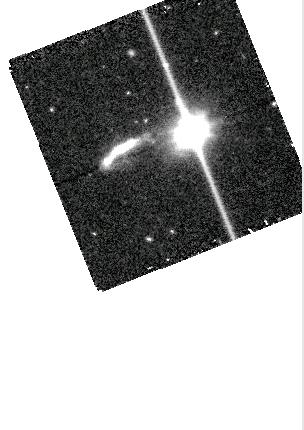
Arp 283 (NGC 2798/9). Part of the SINGS sample.
North is up and east is to the left.
Note the third galaxy to the south in the second field.
Next: IRAC band 1 (3.6 microns).
Next: IRAC band 4 (8.0 microns).
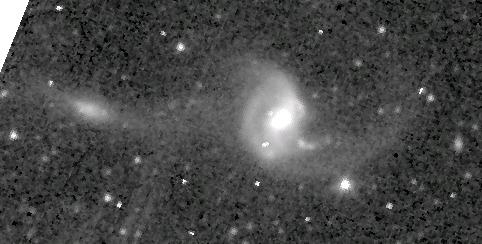
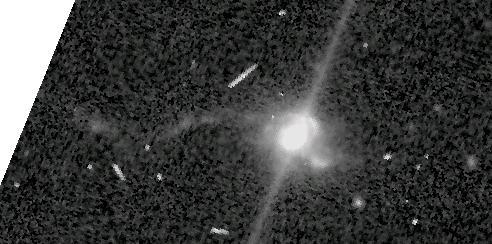
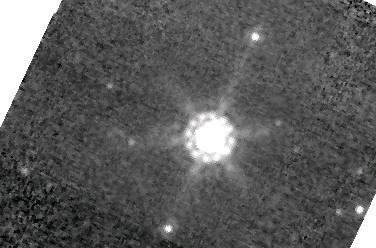
Arp 284.
North is up and east is to the left.
NGC 7714 (west/right), NGC 7715 (east/left).
Left: IRAC band 1 (3.6 microns).
Next: IRAC band 4 (8.0 microns).
Next: MIPS 24 microns.
In the Rieke GTO project.
Note the `ringing' from the point spread nucleus at 24 microns,
due to the very bright starburst nucleus of NGC 7714.
To see other images of Arp 284 at other wavelengths,
click
here.

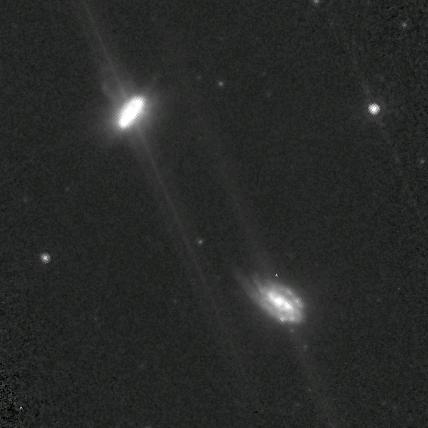
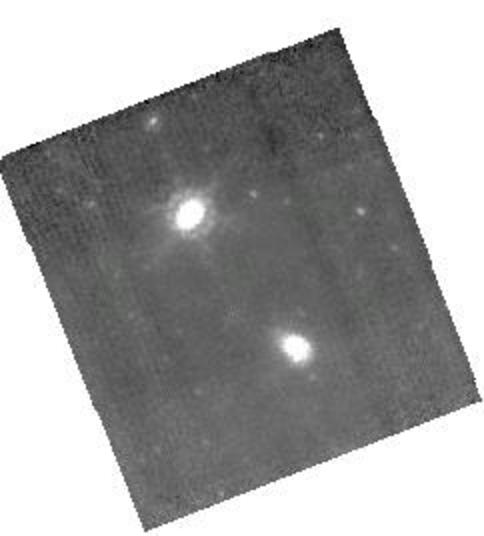
Arp 285.
North is up and east to the left.
Left: IRAC band 1 (3.6 microns).
Next: IRAC band 4 (8.0 microns).
Next: MIPS 24 microns.
Click
here for more images of Arp 285, including GALEX, SARA, and SDSS images.
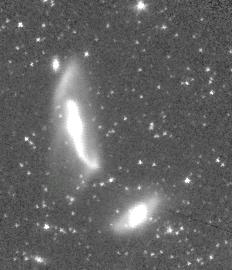
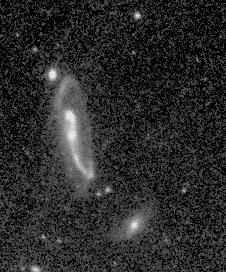
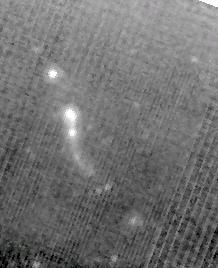
Arp 290. Left: IRAC band 1 (3.6 microns).
Next: IRAC band 4 (8.0 microns).
Next: MIPS 24 micron band.
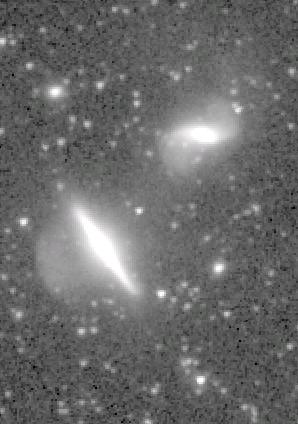
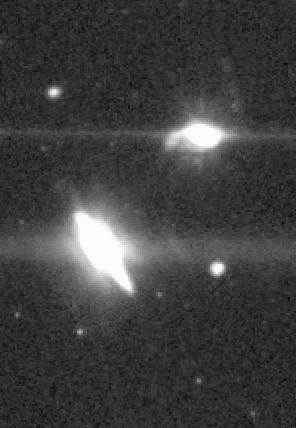
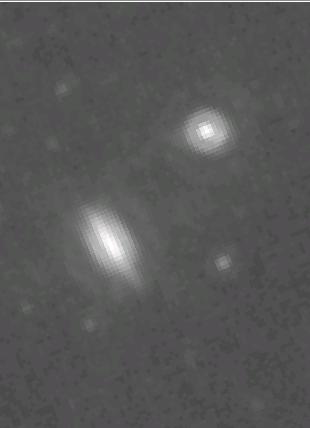
Arp 293 (NGC 6285/6).
Left: 3.6 microns. Next: 8 microns. Next: 24 microns.
In the Mazzarella
`Luminous Infrared Galaxies' GO project.
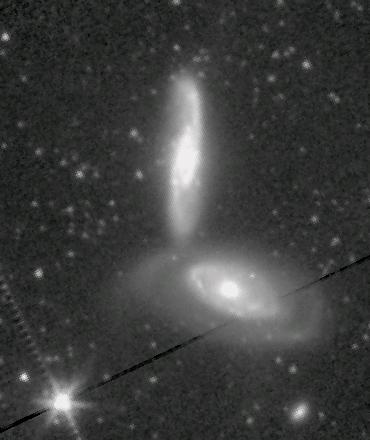
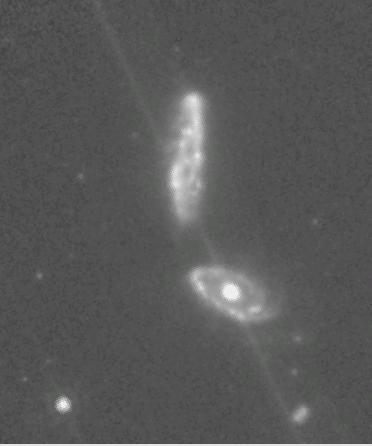
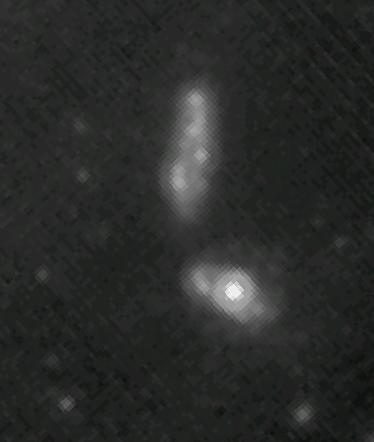
Arp 294.
North is up and east to the left.
Left: IRAC band 1 (3.6 microns).
Next: IRAC band 4 (8.0 microns).
Next: MIPS 24 microns.
The galaxy to the north becomes
clumpier and
the ring in the southern galaxy
becomes more prominent
at 8 microns.
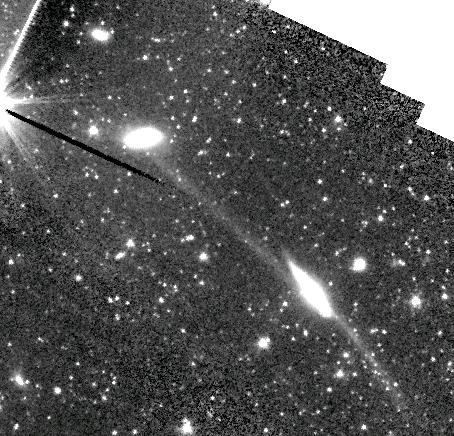
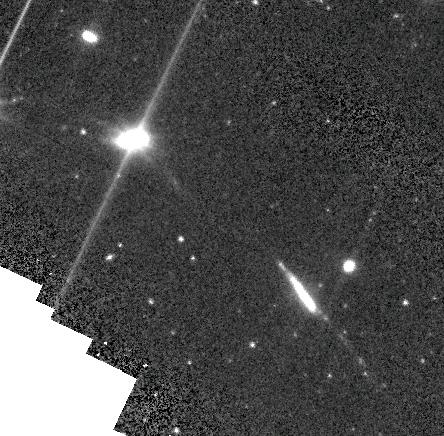
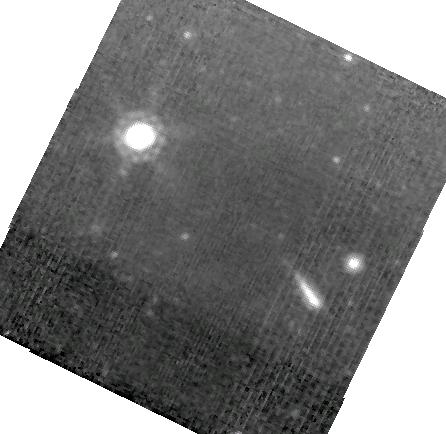
Arp 295. Left: IRAC band 1 (3.6 microns).
Next: IRAC band 4 (8.0 microns).
Next: MIPS 24 microns.
Last: False color. Blue=3.6 microns; Red=8.0 microns, after
stellar component subtracted.
As with Arp 104 and 107, the bridge becomes
less evident at 8.0 microns.
However, some clumps are visible
in the southern tail
at 8.0 microns. Only one star formation
region is visible in that tail in the Hibbard
(1995) H-alpha map.
Note the artifacts in the 24 micron image
around the bright nucleus of the northern galaxy.
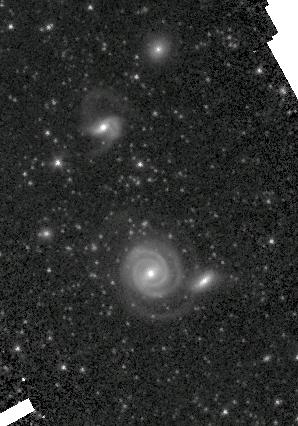

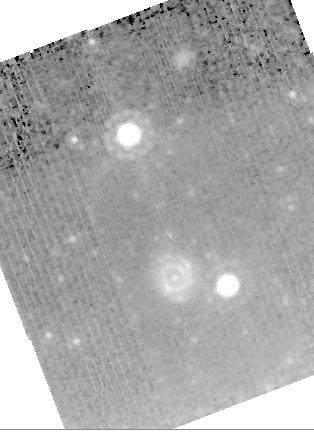
Arp 297.
North is up and east to the
Left: IRAC band 1 (3.6 microns).
Next: IRAC band 4 (8.0 microns).
Next: MIPS 24 microns.
All four galaxies are visible in the 24 micron image.
The spiral pattern is nicely visible in the large galaxy in the south.
The small companion to the southwest is extremely bright at 24 microns.

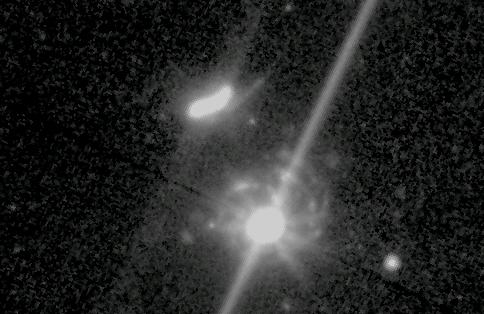
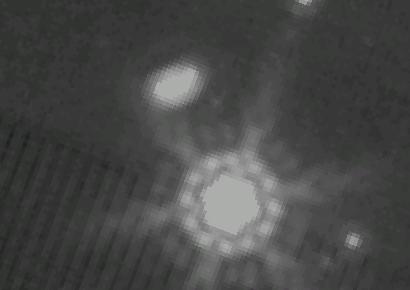
Arp 298 (NGC 7469/IC 5283).
North is up and east to the
Left: IRAC band 1 (3.6 microns).
Next: IRAC band 4 (8.0 microns).
Next: MIPS 24 microns.
In the Lawrence GTO project.
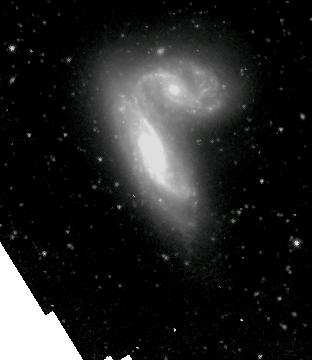
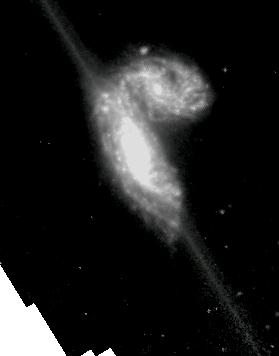
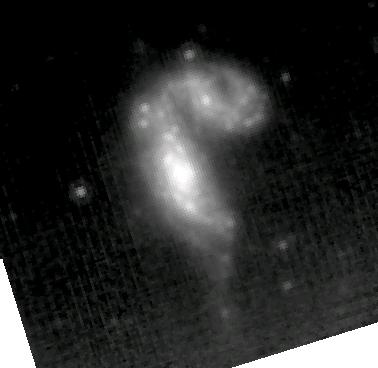
NGC 4567. North is up and east to the
left.
Left: IRAC band 1 (3.6 microns).
Next: IRAC band 4 (8.0 microns).
Next: MIPS 24 microns.
Note the tail to the south.